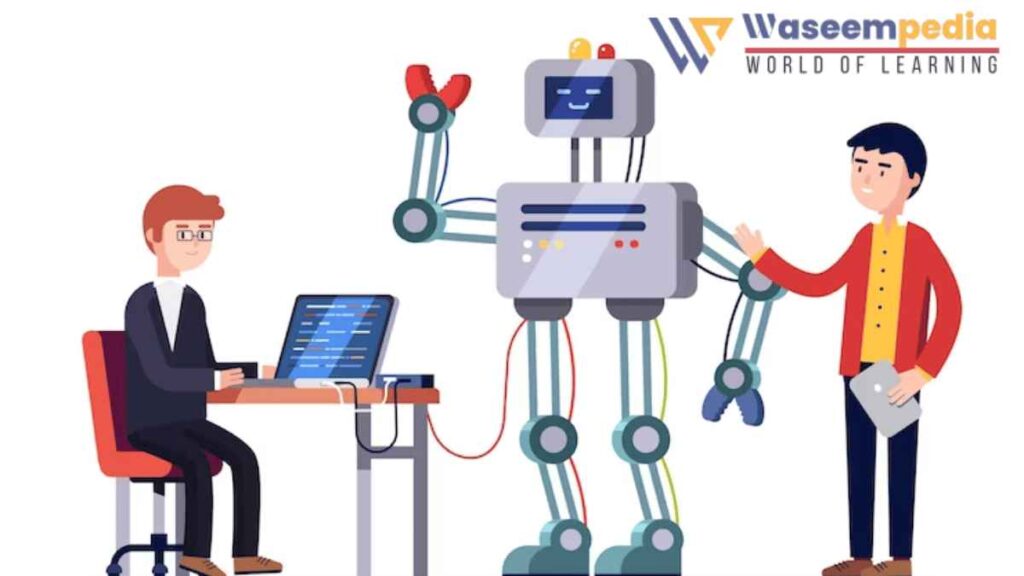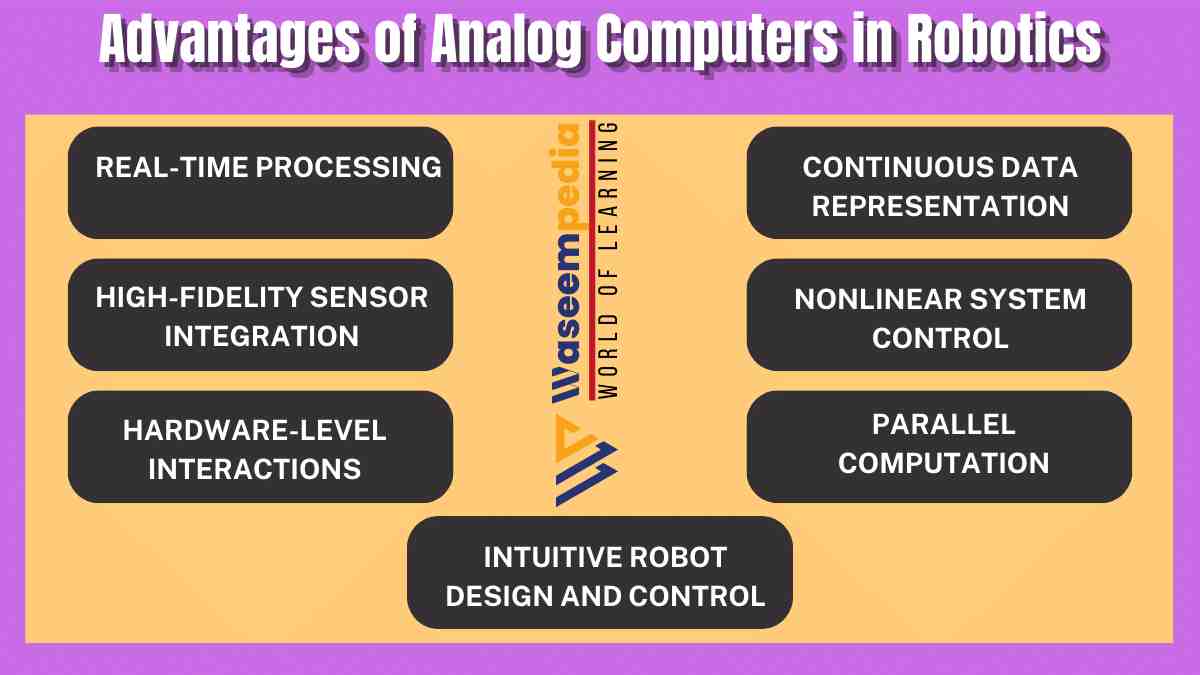Analog computers having many advantages in robotics, such as real-time processing, continuous data representation, high-fidelity sensor integration, nonlinear system control, hardware-level interactions, parallel computation, and intuitive robot design and control. In this article, we will explore the advantages of analog computers in robotics and understand their significance in this domain.
While digital computers and microcontrollers have become standard components in robotics, analog computers continue to provide valuable tools for enhancing the capabilities and performance of robotic systems. The combination of analog and digital approaches can contribute to more efficient, versatile, and intelligent robots that can navigate complex environments and perform a wide range of tasks.

Robotics is a multidisciplinary field that combines principles from engineering, computer science, and artificial intelligence. The design and control of robotic systems require sophisticated algorithms and computational power. While digital computers and microcontrollers have become essential components in robotics, analog computers offer unique advantages that can augment the capabilities of robotic systems. By leveraging the continuous nature of analog computation, analog computers provide valuable insights and contribute to more efficient and versatile robotics.
what is Analog Computers?
Analog computers process information using continuous physical quantities, such as voltages or currents, to represent and manipulate data. Unlike digital computers that operate on discrete values, analog computers can directly model and simulate the behavior of robotic systems. In the context of robotics, analog computers offer an alternative approach to understanding and controlling robot dynamics.
7 Advantages of Analog Computers in Robotics
7 Advantages of Analog Computers in Robotics are as following
1. Real-Time Processing
Real-time processing is critical in robotics, as it enables immediate perception, decision-making, and control in dynamic environments. Analog computers excel in real-time processing due to their ability to work with continuous data streams without the need for digitization or discretization. This real-time capability allows robots to respond quickly to sensory input and adjust their actions accordingly, enhancing their agility and adaptability in real-world scenarios.
2. Continuous Data Representation
Continuous Data Representation is a one of most important Advantages of Analog Computers in Robotics. Analog computers utilize continuous data representation, which is advantageous in robotics. Robots interact with their environment through sensors that provide continuous streams of data, such as vision, force, or proximity measurements.
Analog computers can process and represent this continuous data without the loss of information associated with discretization. By working with continuous data, analog computers enable robots to perceive and interact with their environment more accurately and efficiently.
3. High-Fidelity Sensor Integration
Robots rely on sensors to gather information about their surroundings and make informed decisions. Analog computers excel in high-fidelity sensor integration, allowing for precise and detailed sensor data processing. Analog computers can capture and process signals from various sensors in real-time, enabling robots to gather accurate and timely information for perception, navigation, and object manipulation tasks.
4. Nonlinear System Control
Robotic systems often exhibit nonlinear behavior, making their control and motion planning challenging using traditional control techniques. Analog computers are well-suited for controlling nonlinear robotic systems, as they can directly model and simulate the nonlinear relationships between system variables. By leveraging the continuous nature of analog computation, analog computers enable precise and responsive control of robotic systems, allowing for complex and agile robot motions.
5. Hardware-Level Interactions
Analog computers enable hardware-level interactions in robotics. Robots can directly interface with analog computers, enabling real-time control and communication with physical actuators and sensors. This hardware-level interaction enhances the accuracy and timeliness of robot control, as robots can evaluate the behavior of their actuators and sensors and make adjustments in real-time with direct connections to physical components.
6. Parallel Computation
Analog computers are inherently parallel computing machines, capable of performing multiple computations simultaneously. This parallel processing capability is advantageous in robotics, where multiple sensor inputs need to be processed concurrently, and complex control algorithms require simultaneous computation. Analog computers can efficiently handle the parallel nature of robotic data and computations, enabling robots to process sensory information, perform complex calculations, and control multiple actuators simultaneously.
7. Intuitive Robot Design and Control
Intuitive Robot Design and Control is also a very important Advantages of Analog Computers in Robotics. Analog computers offer an intuitive approach to robot design and control. Engineers and researchers can physically connect and manipulate analog components to design and control robotic systems.
This hands-on interaction allows for a deeper understanding of the relationships between robot parameters and behavior. Analog computers provide an intuitive platform for engineers and researchers to experiment with different control strategies and optimize the performance of robotic systems.
Related FAQ’s
How do analog computers differ from digital computers in robotics?
Analog computers process continuous data and directly model robotic behavior, while digital computers operate on discrete values and rely on algorithms for control and computation.
What advantages do analog computers offer in robotics?
Analog computers excel in real-time processing, continuous data representation, high-fidelity sensor integration, nonlinear system control, hardware-level interactions, parallel computation, and intuitive robot design and control.
Why is real-time processing important in robotics?
Real-time processing enables robots to perceive and respond quickly to their environment, enhancing their agility and adaptability in dynamic scenarios.
How do analog computers handle nonlinear system control in robotics?
Analog computers can directly model and simulate the nonlinear relationships between system variables, enabling precise and responsive control of nonlinear robotic systems.
Why are hardware-level interactions valuable in robotics?
Hardware-level interactions allow for real-time control and communication with physical actuators and sensors, enhancing the accuracy and responsiveness of robot control.

